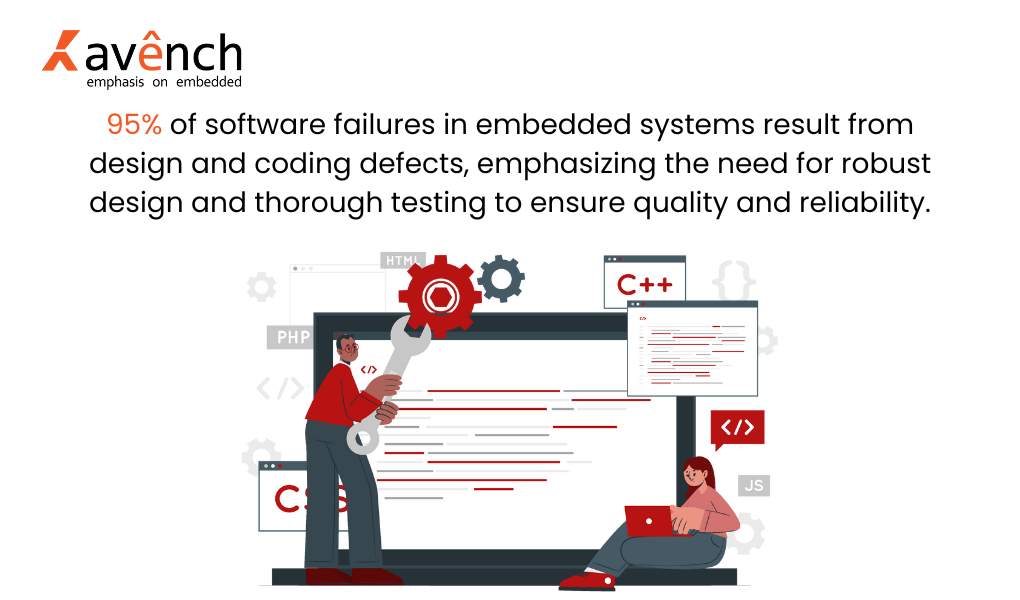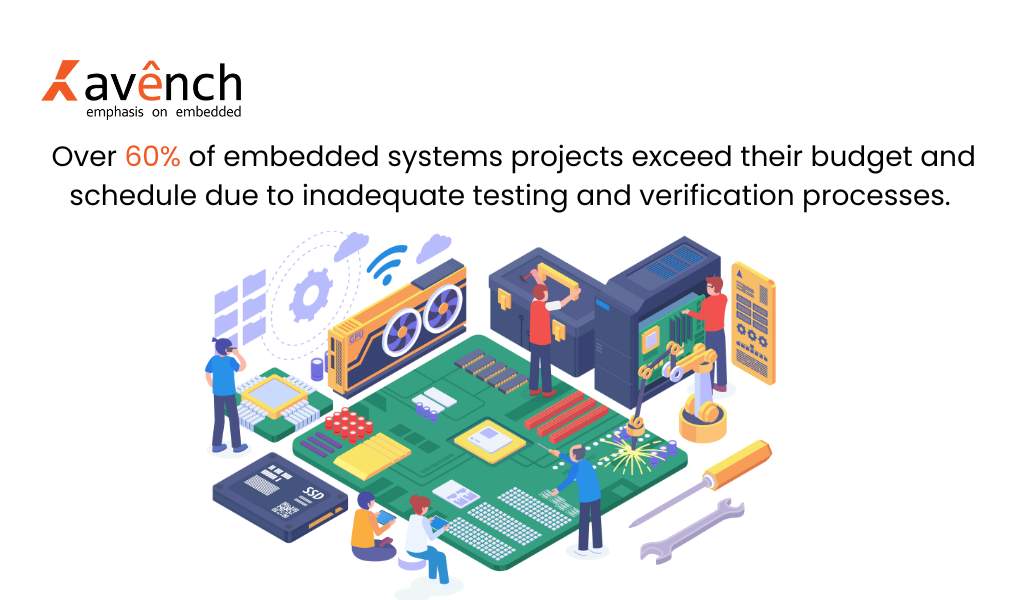In the present technological setting, the need for robust, reliable, and high-quality embedded systems has never been felt more. Embedded systems for software engineering form the backbone of most applications, extending from consumer electronics to industrial automation and medical devices. These kinds of systems must work flawlessly in a wide variety of conditions.
Design Principles of Quality Assurance for Embedded Systems
Robust design principles are the root of high quality in embedded systems engineering. Good design not only ensures functionality but also makes testing and maintenance easier.
Modular Design: One of the major principles is modular design. System decomposition into small, manageable modules allows for isolated testing and easier troubleshooting. Every module can be independently developed, tested, and validated separately before being integrated into the larger system.
Code Reviews and Peer Testing: Regular code reviews and peer testing can substantially improve the quality of the code. It is a collaborative approach toward detecting the possible issues in the codes at an early stage of development. Testing among peers—developers test each other’s code—can adopt a fresh perspective and capture errors that will otherwise likely remain uncaptured by the original developer.
 Advanced Testing Techniques for Embedded Systems
Advanced Testing Techniques for Embedded Systems
Testing is among the pillars of quality assurance that is concerned with embedded systems design services. Enhancements to modern-day testing are enabled to pinpoint the flaws that standard methods of testing can or can not detect.
Hardware-in-the-Loop(HIL) Simulation: This is a powerful approach that merges true components of hardware with simulated input and output, resulting in the projected testing of the way the system would have functioned in any environmental variable without having a completely functioning set of hardware configurations.
Fault Injection Testing: In this type of test, faults are injected into a system to observe the reaction of the faults. By doing this, we can observe any point of failure in action and ensure that the system reacts gracefully to undesirable situations.
Formal Verification Techniques: Formal verification is a technique of mathematically proving that the system behaves according to the requirements. This technique is very useful for safety-critical applications since failure cannot even be the case. Any algorithms proved to be correct and the behavior of transition can often be confirmed to ensure the reliability of the developer.
RTOS and Their Role in Reliability
This is the reason a Real-time Operating System(RTOS) is essential for maintaining the reliability of embedded systems. An RTOS provides deterministic behaviour and real-time scheduling in which tasks are guaranteed to be executed within timing constraints. This predictability must exist for any application where timing will make the difference, such as automobile safety systems or medical devices.
RTOS does not just handle task execution but also does inter-task communication and resource management. RTOS provides a stable and predictable environment and hence enables the reliability and predictability of embedded systems engineering solutions.
Best Practices of Software Development Lifecycle(SDLC) for Embedded Systems
Best practices in SDLC are required to make embedded systems reliable. Some of the best practices that play a very important role are:
Requirements Management: A good project-based architecture will be built upon well-defined and detailed requirements. In the case of embedded systems, these requirements consist of hardware and software interaction, performance metrics, and the environmental condition under which the system shall work.
Version Control: Version control is being taken care of by the use of a version control system like Git. It effectively handles changes to the codebase through the provision of tracking, cool collaboration, and easy rollback to the last version if the necessity arises.
Continuous Integration: It is about building and running every test in the system when anyone changes anything in the codebase. This kind of process always guards new changes so that it never brings in a bug, and the system remains stable for the whole development process.
Automated Testing: Automated testing tools can perform unit to system-level tests very quickly and consistently. Automated testing makes it possible to detect problems earlier, particularly when compared to manual testing efforts.
 Future Trends in Ensuring Quality and Reliability in Embedded Systems
Future Trends in Ensuring Quality and Reliability in Embedded Systems
Different trends and new technologies in the software engineering domain are bringing a radical change in the face of embedded systems. Innovations such as AI-driven testing, better diagnostic tools, and predictive maintenance are changing the way quality and reliability are assured.
AI-Driven Testing: Artificial intelligence can be used to improve the testing process by identifying patterns and anomalies that may otherwise lie out of the scope of traditional methods. AI will also be capable of generating tests automatically to improve both coverage and efficiency.
Advanced diagnostic tools: They provide new insights into the behaviour of the systems, thereby giving more accurate identifications of the problems. They can track real-time performance, identify faults, and predict possible failures before they occur.
Predictive Maintenance: Predictive maintenance is a condition-monitoring-based integration of analytics and cognitive machine learning, predicting when an asset or system is likely to fail. Being proactive, it is possible to take maintenance way before failure, reducing downtimes, and increasing reliability.
Conclusion:
Ensuring quality and reliability in embedded systems for software engineering requires a combination of robust design principles, advanced testing techniques, and best practices throughout the development lifecycle. As technology continues to improve in the future, more sophisticated methods and tools will keep being invented so that engineers can make more reliable and higher-quality embedded systems.
At Avench Systems, we commit to delivering state-of-the-art Embedded Engineering solutions that are up to the rigorous expectations of today’s industries. Therefore, our expertise lies across the entire spectrum of embedded systems engineering from an initial concept to implementation, full development, and deployment. We utilize state-of-the-art methodologies and tools to ensure that our solutions are of quality and reliability.
Avench is one of the leading embedded system companies in bangalore . For any sales queries, contact us at +1 (775) 404-5757. You can also email us at sales@avench.com. We will be happy to assist you.

 Advanced Testing Techniques for Embedded Systems
Advanced Testing Techniques for Embedded Systems Future Trends in Ensuring Quality and Reliability in Embedded Systems
Future Trends in Ensuring Quality and Reliability in Embedded Systems